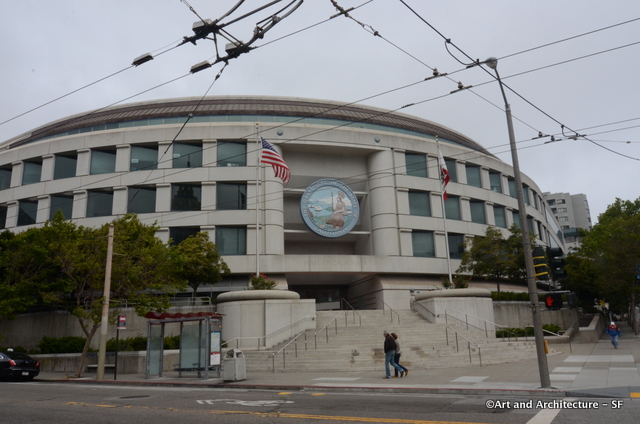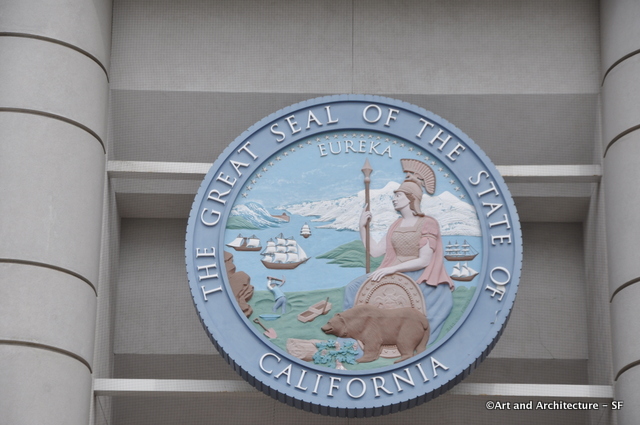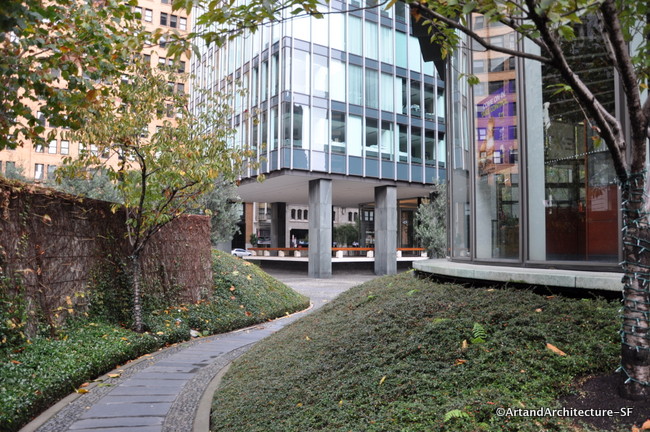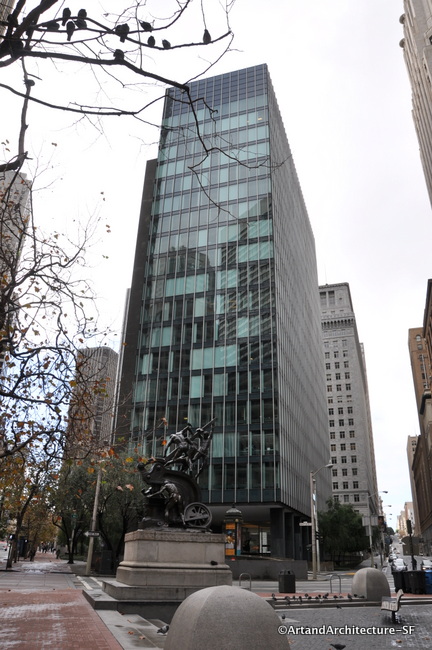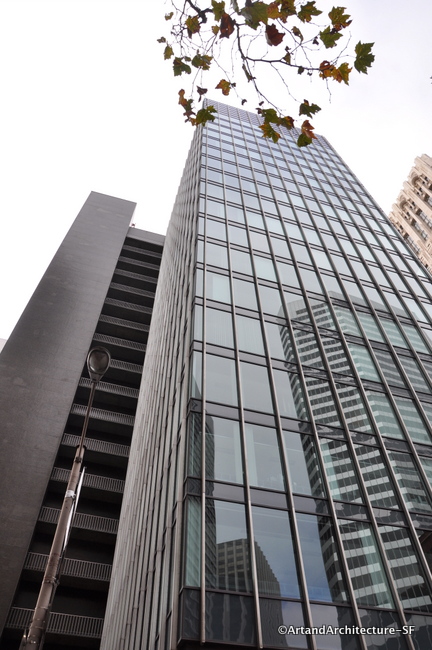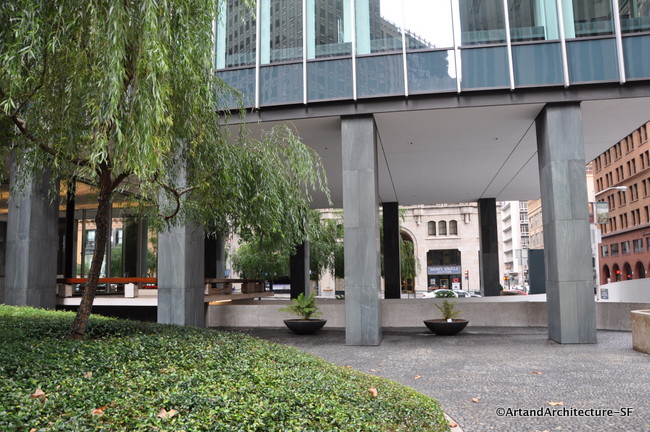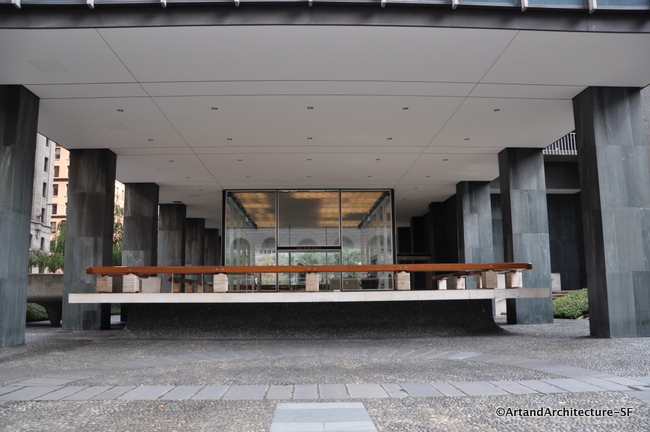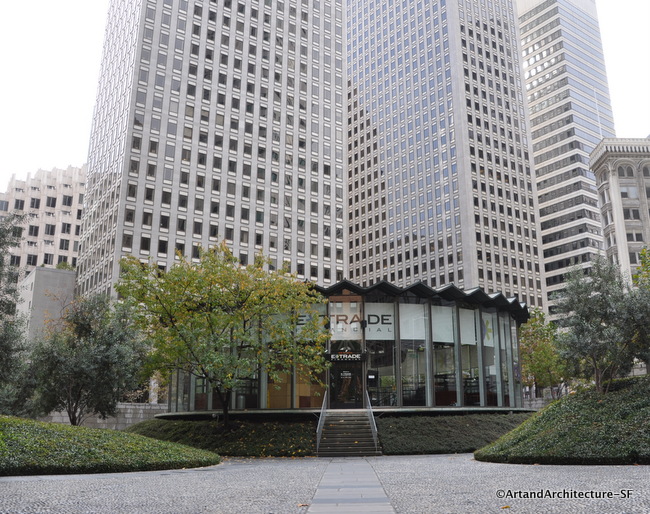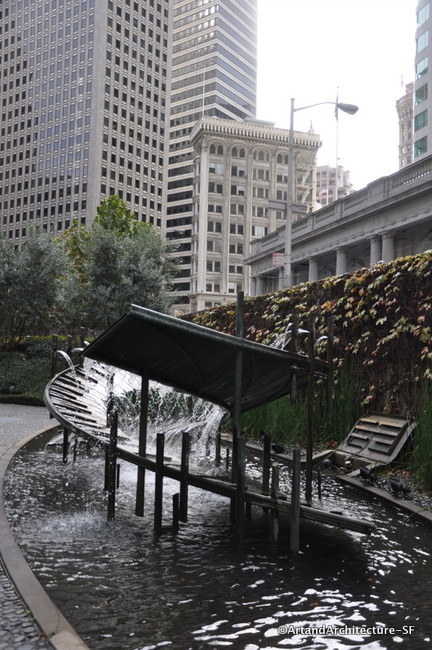505 Van Ness at McAllister
Civic Center
This is the Edmund G. Brown State Office Building. Built in 1986 and designed by Skidmore, Owings and Merril, it is one of the anchors of the San Francisco Civic Center.
The seal was created by sculptor Rosa Estebanez.
Estebanez’s life has been described as a remarkable story of courage, tragedy and the triumph of the human spirit. Born in Cuba, Estebanez graduated from the National School of Art in Havana with a master’s degree in art and became the official sculptor for Cuban president Fulgencio Batista. In 1960, Estebanez left Cuba following the communist overthrow of Batista’s government.
Estebanez arrived in the United States unable to speak English with her 10 year-old-son, Jorge, and a $5 bill in her purse. She chose to settle in Petaluma, California because she had a brother living there.
At first Estebanez worked as a chicken plucker at a local poultry plant before she was able to resume her art career. For a time she was employed part-time as a “re-toucher” at Decker’s Photo Studio. Estebanez also held a position with Kresky’s Sign, communicating with her supervisor through drawings and sign language. Estebanez taught classes privately and at night at Petaluma High School; led tours abroad, and created a prolific body of work, including murals, bas reliefs, sculpture, public statues, and paintings. In 1978 she joined the National Art Board of the American League of Pen Women. Estebanez also hosted a 7-part television series entitled “How to Sculpt with Rosa” on KQED’s Open Studio. She died in 1992.
The Great Seal of the State of California was adopted at the California state Constitutional Convention of 1849 and has undergone minor design changes since then, the last being the standardization of the seal in 1937. The seal features the Roman goddess Minerva (Athena in Greek mythology), the goddess of wisdom and war. According to ancient Roman myth, the goddess Minerva was born fully grown. Just as Minerva was born fully grown, so California became a state without first having been a territory. Minerva’s image on the Great Seal symbolizes California’s direct rise to statehood.
The seal also features a California grizzly bear (the official state animal) feeding on grape vines, representing California’s wine production; a sheaf of grain, representing agriculture; a miner, representing the California Gold Rush and the mining industry; and sailing ships, representing the state’s economic power. The phrase “Eureka,” meaning “I have found it!” (εύρηκα in Greek) is the California state motto. The original design of the seal was by U.S. Army Major Robert S. Garnett and engraved by Albert Kuner. However, because of the friction then in existence between the military and civil authorities, Garnett was unwilling to introduce the design to the constitutional convention, so convention clerk Caleb Lyon introduced it as his own design, with Garnett’s approval. Garnett later became the first general to be killed in the Civil War, where he served as a Confederate general.
